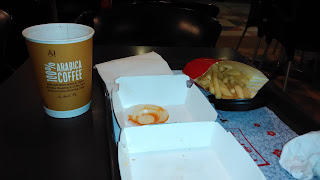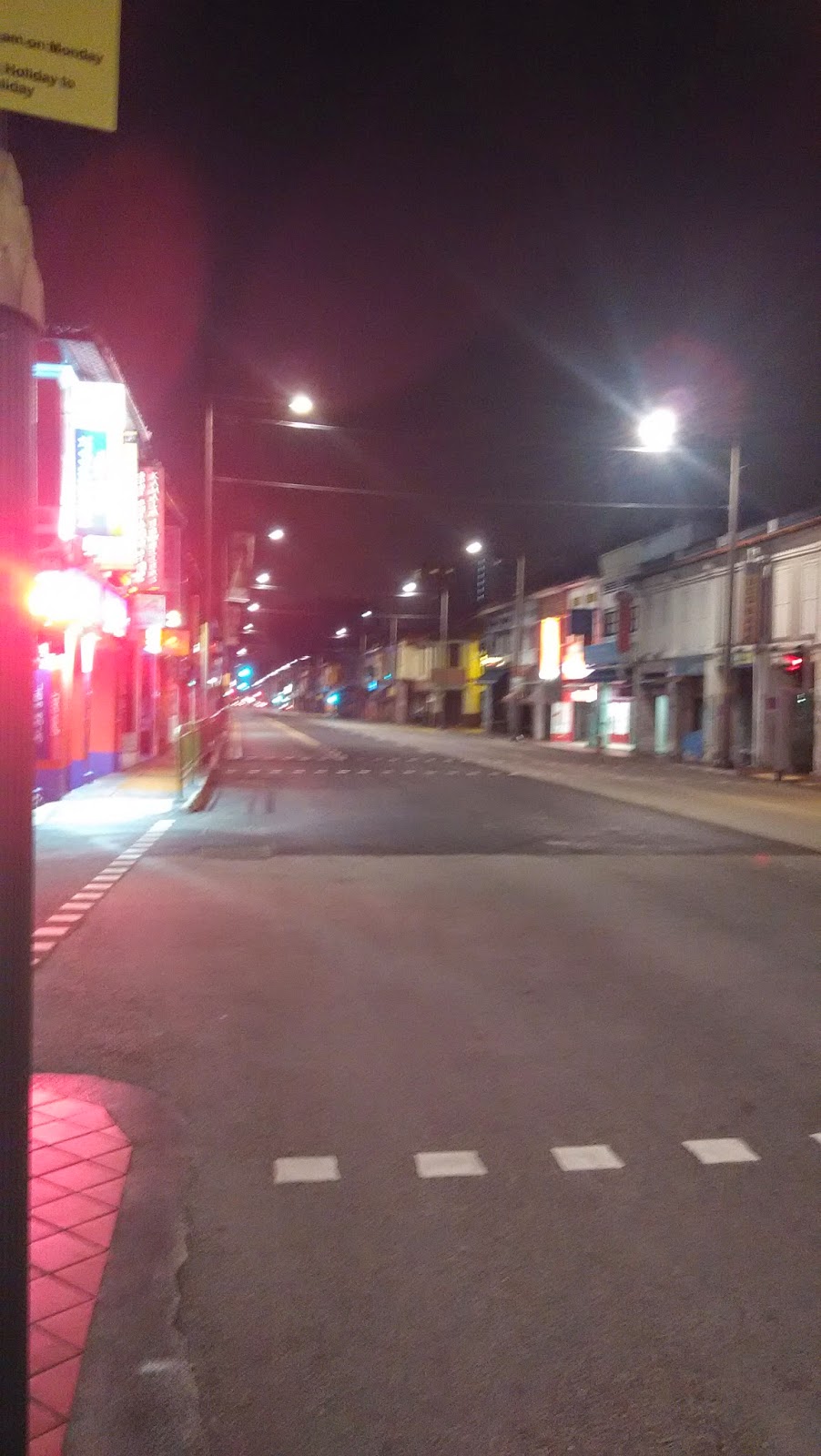Looping
Singapore by Bicycle
Prologue
The plan was to cycle around the island of Singapore, staying as close to the coast as possible. Fortunately the rains stopped by 4pm on Sunday, 7th of Feb 2016, the eve of the Lunar New Year, and I started at 4.30pm from my usual place at the East Coast Park near the Siglap connector.
The plan was to cycle around the island of Singapore, staying as close to the coast as possible. Fortunately the rains stopped by 4pm on Sunday, 7th of Feb 2016, the eve of the Lunar New Year, and I started at 4.30pm from my usual place at the East Coast Park near the Siglap connector.
I
headed west, hoping to cover new regions in that direction before the
rains returned. The other advantage of heading west first was that I
got to see the eastern regions the next day in the early morning
light, something I had not experienced before.
Picking
the new year eve, and continuing overnight to the following day
turned out to be a good choice as the roads were essentially
deserted, providing a peaceful cycling experience. I stayed on the
park connectors and side-walks where possible, but ventured onto the
quiet roads when necessary.
Westward
The
stretch from the East Coast Park to the Marina Barrage, and then
continuing behind that to Keppel Road and the West Coast Highway
until Alexandra Road was familiar territory from my previous rides.
Took a snack break at about 7pm at a fast food place, one of the few
places open, in mall near Labrador MRT.
It
was peaceful as I continued along the West Coast Highway. Noticed
the renovated exterior of the Haw Paw Villa. Further down, beyond
Clementi I was surprised to discover that there were many private
housing developments on the right of the highway, facing the
industrial buildings on the other side.
I
missed the turn into Jalan Buroh and the planned route along the
south of the Pandan reservoir, so I cycled on along Jurong Town Hall
Road. At this point I had a craving for a hot drink, and detoured to
Jurong East MRT which had a big crowd gathered about the malls. Again
only a few fast food places were open, but it was enough for me to
get re-energised on a hot milo there. Discovered the location of
the new Ng Teng Fong hospital across the road.
From
there I continued along Boon Lay Way, a new region to me, until
Jalan Bahar, a name that was vaguely familiar from my NS days.
Northward
Went
up Jalan Bahar and took a rest and refreshment break at a void deck
of HDB flats. I had to decide whether to press forward through what
the map indicated to be a long stretch of forested area, or to take a
nap. I tried napping but couldn’t doze off, but the rest was
sufficient and I felt I could continue. I felt re-assured that there
were bus-stops along the stretch that could provide shelter in case
it started raining.
Passed
the entrance to NTU and then the huge Civil Defence Academy. There
was nothing else to see along that stretch of Jalan Bahar, and it
felt somewhat spooky. Beyond that it was the wide and straight Lim
Chu Kang road, which felt peaceful despite the signs and paths
pointing to the cemeteries on the left.
By
now my legs were beginning to ache, maybe because I hadn’t cycled
for a long time before the day's event, and maybe because I had just
recovered from a bout of stomach flu. I needed to rest my legs,
which I did at a bus stop along LCK road. It was midnight.
LCK
road never seemed to end, but eventually it did become narrower and
winding, with more greenery. I took more breaks as I went along, one
outside the Sungei Gedong camp, another name familiar from my NS
days.
It
wasn’t completely deserted, as at least one vehicle passed me every
minute or so. But I saw only one or two other cyclists that night,
the rest appearing only later around sunrise.
I
heard what sounded like life-firing outside the life-firing area, but
was surprised that such an event would be going on on that day. It
sounded more like fire-works, but why would there be fire-works in
this secluded place? The mystery would be solved a few kilometres
down the road.
Eastward
Turned
into Neo Tiew Road, passing many farms, and the entrance to Sungei
Buloh, before emerging onto Kranji Way on the dam forming the Kranji
reservoir.
From here I could look across to Johor Bahru (Malaysia),
and see and hear them celebrating the Lunar New Year with fire-works.
View of JB from Kranji Way
My
leg muscles were tight and aching, the rest stops and self-massages
not helping much. That is when I discovered a solution. I found that
walking actually released the tension in the muscles. Maybe the
walking and cycling muscles were complementary.
So
my new strategy was to walk my bike up steep inclines, cycle along
flat stretches on low gear (to save my knees), and let gravity do all
the work on down slopes.
I
needed a good meal, and a web-search indicated a 24 hr fast food
place at admiralty MRT. It took immense effort to continue till
there, through Kranji Road, into Woodlands Road, Woodlands Ave3, and
Woodlands Ave 7.
Reached
the place at about 3.30am and was disappointed that they had no whole
day breakfast and no toilet. Got a meal anyway, replacing the sugary
drink with a hot milo. The meal and rest did me good. In fact I
dozed off there, maybe encouraged by another “auntie” who was
taking a cosy nap nearby. The other patrons were all youngsters.
To
Quit or to Continue?
I
then had to decide whether to continue with my plan, there was still
a long way to go, or cut the trip short. I felt that I would
probably not try anything as crazy as this again, so I had better
finish the job, albeit slow and easy. (The last time I did such an
endurance event was decades ago during my NS days, but back then I didn’t have
a choice).
From
Admiralty, I followed the MRT line to Yishun. By then, 5.30am, the
buses and MRT were starting operation and some people were going to
work! Took a toilet break at the mall at Yishun.
Then
I cut through Yishun Central towards Ave 1 and the dam across the
Lower Seletar Reservoir, essentially reversing the path I had taken
on another cycling trip. I turned north into Seletar East Link which
seemed depressingly unending. It was along this stretch that I saw
many early morning cyclists. One of them gave me a wave of
encouragement when he saw me walking my bike during one of my
walk-ride stretches.
Hit
Punggol by day-break but couldn’t make out how to get onto Coney
Island quickly (to see the cow), so I settled for a ride along the
waterway. This was the first time I was in this area at daytime, so
I got to view the existing and the many new flats under construction.
Day break at Ponggol Waterway
Crossed
over Lorong Halus into Pasir Ris and was in very familiar territory.
Found a coffee shop open in Elias Mall along Pasir Ris Drive 3. That
was my breakfast stop.
Now
I got my second-wind and felt the mission was on back on course.
At
the end of Pasir Ris Drive 3 I saw a petrol station and felt maybe it
would be good to pump up my back tire a bit more. Unfortunately I
ended up deflating it and had problems re-inflating it. Another
cyclist, a good Samaritan tried to assist me but we ended up damaging
the inner tube.
Without
much thinking I continued walking along Loyang Avenue towards Changi
Village, hoping to get repairs done there. But the two bicycle
shops there were closed as it was the first day of the Lunar New Year
( I didn’t know there was also a bike shop along the park connector
that might have been open).
So
with much trepidation, I locked my bike in front of the hawker centre
and took the bus home on Monday, 8th Feb 2016, at about
11am.
At
least I was lucky that my cycling had not been interrupted by rain,
though I had come prepared for that possibility.
Home
and Return
I
rested on the 8th and recovered by the 9th ,
helped by a good massage and good food. Finally, on the morning of
the 10th, I headed for Changi Village. Was very happy to
find my bike still there and in one piece. Got it fixed at the bike
shop that had opened. Also decided to get some DIY tools to fix
similar problems in the future.
Rode
home contented along the Changi Coastal Park Connector and got to see
Terminal 5 and the new runway under construction.
It
started to drizzle lightly but fortunately there was no downpour and
I made it home.
Epilogue
An exhausting trip, but worth the try. Good to see many relatively rustic sights still existing in Singapore.
An exhausting trip, but worth the try. Good to see many relatively rustic sights still existing in Singapore.
I
had to depart at parts from my original plan, so there are things
that I probably missed. Well, that’s another opportunity calling !
Till
next time !






























